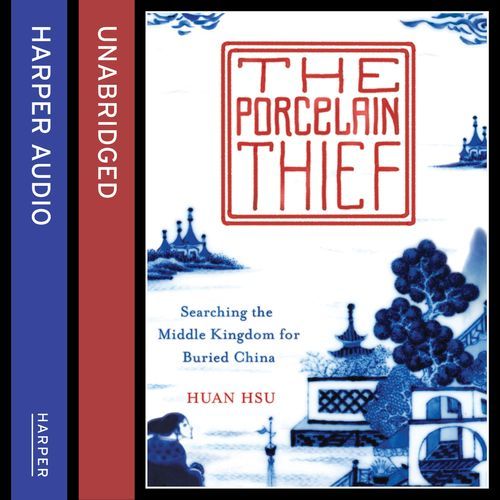
The Porcelain Thief
eAudiobookHuan Hsu / Mike Grady
In 1938 with the Japanese army approaching from Nanking Huan Hsu’s great-great grandfather Liu and his five granddaughters were forced to flee their hometown on the banks of the Yangtze River. But before they left a hole was dug as deep as a man and as wide as a bedroom in which was stowed the family heirlooms.The longer I looked at that red chrysanthemum plate the more I wanted to touch it feel its weight and run my fingers over its edge which like its country’s - and my family’s - history was anything but smooth.1938. The Japanese army were fast approaching Xingang the Yangtze River hometown of Huan Hsu’s great-great-grandfather Liu. Along with his five granddaughters Liu prepares to flee. Before they leave they dig a hole and fill it to the brim with family heirlooms. Amongst their antique furniture jade and scrolls was Liu’s vast collection of prized antique porcelain.A decades-long flight across war-torn China splintered the family over thousands of miles. Grandfather Liu’s treasure remained buried along with a time that no one wished to speak of. And no one returned to find it - until now.Huan Hsu a journalist raised in America and armed only with curiosity returned to China many years later. Wanting to learn more about not only his lost ancestral heirlooms but also porcelain itself Hsu set out to separate the layers of fact and fiction that have obscured both China and his heritage and finally completed his family’s long march back home.Melding memoir and travelogue with social and political history The Porcelain Thief is an intimate and unforgettable way to understand the bloody tragic and largely forgotten events that defined Chinese history in the nineteenth and twentieth centuries.In The Porcelain Thief Hsu presents an autobiography that is as much about his family's past as it is about China's history. His quest to unearth his family's buried heirlooms is a testament to the best of investigative journalism offering a top-notch narrative that paints a vivid picture of China's past.nan
- Published by HarperCollins UK
- Fiction/Non-FictionNon Fiction
- Genre Biography
- Target Audience Adult
- Released 26th March 2015
- Duration 13 Hrs. 42 Mins.
- ISBN 9780008123987
More in this genre
















